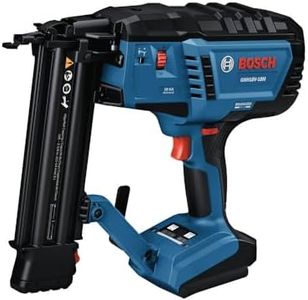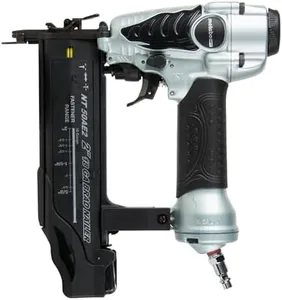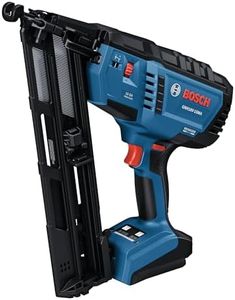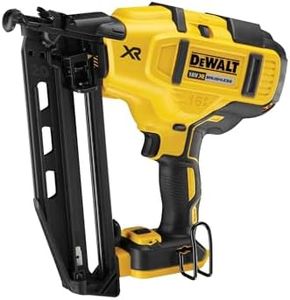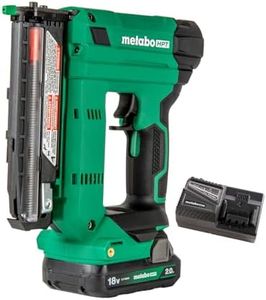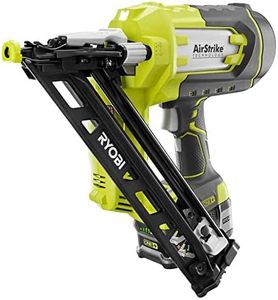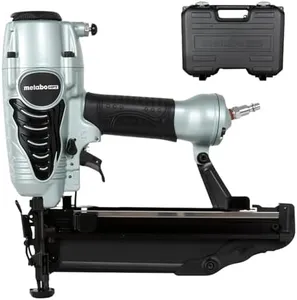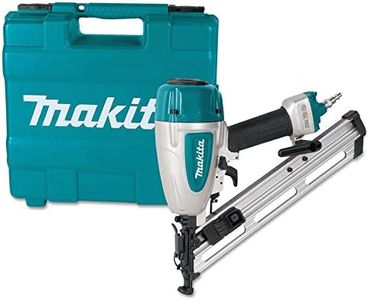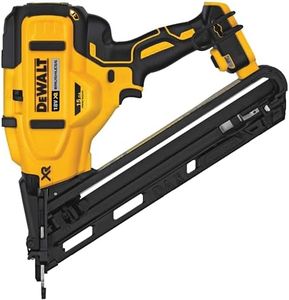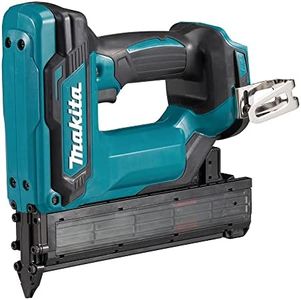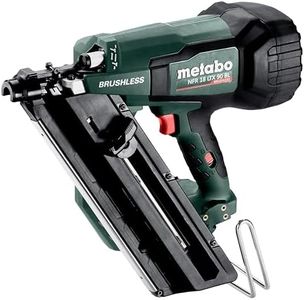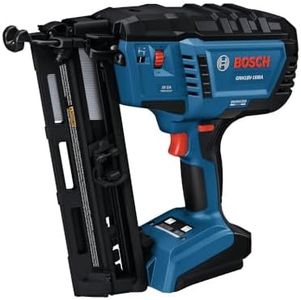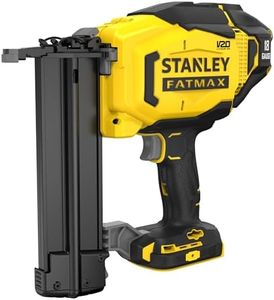We Use CookiesWe use cookies to enhance the security, performance,
functionality and for analytical and promotional activities. By continuing to browse this site you
are agreeing to our privacy policy
10 Best Finishing Nailers
From leading brands and best sellers available on the web.By clicking on a link to a third party's website, log data is shared with that third party.
Buying Guide for the Best Finishing Nailers
Choosing the right finishing nailer can really improve your woodworking or renovation projects by making trim, molding, and finishing touches much easier and faster. To find the best fit, it's important to understand the different types, how they work, and what features will make your job simpler and more comfortable. Consider the kind of work you do most—the thickness of materials, frequency of use, and whether you'll be working in tight spaces or wide-open rooms. By focusing on a few key specifications, you’ll be able to pick a nailer that makes your projects smoother and gives you professional results.GaugeGauge refers to the thickness of the nails that the nailer uses, with lower numbers meaning thicker nails. For finishing nailers, you’ll often find 15-gauge, 16-gauge, and 18-gauge. Thicker nails (15 and 16-gauge) have stronger holding power, great for baseboards and door casings, while thinner 18-gauge nails are less likely to split delicate trim but provide a lighter hold. Choose a gauge based on your typical project—thicker for structural strength, thinner for fine detail work.
Power SourceFinishing nailers can be powered by air compressors (pneumatic), batteries (cordless), or even fuel cells. Pneumatic nailers are lighter and often more reliable but require you to work with a hose and compressor, which can limit mobility. Cordless models are very portable and good for working in multiple locations but can be slightly heavier and may need battery recharges. Choose pneumatic if you have a stationary workshop or cordless if you value mobility and quick setup.
Nail Length RangeNail length range describes the shortest and longest nails the nailer can accept. A wider range allows you to tackle a larger variety of projects, from delicate trim to thicker moldings. If you mostly work on light trim, a nailer that uses shorter nails will suffice; for more versatility or heavier trims, choose a tool with a broader nail length range.
Magazine CapacityThe magazine capacity tells you how many nails the tool holds before you need to reload. Higher capacity lets you work longer without interruptions, which is helpful for bigger jobs. If you’re using the nailer for small projects or occasional fixes, a lower capacity is fine. If you plan on doing long stretches of nailing, look for a model that holds more nails.
Depth AdjustmentDepth adjustment lets you control how far the nail goes into the material. Some nailers allow tool-free adjustment, making it easier to adapt as you switch between woods and materials. If you want clean, flush nails every time without damaging the surface, pick a nailer with easy and accurate depth adjustment—especially useful when working with woods of different densities.
Size and WeightThe physical size and weight of a finishing nailer affect how comfortable it is to use, especially for longer tasks or overhead work. Lighter and more compact nailers are easier to handle in tight spots or for people with less arm strength. If you'll be working for long periods or in awkward positions, choose a lighter and ergonomic model for less fatigue.

